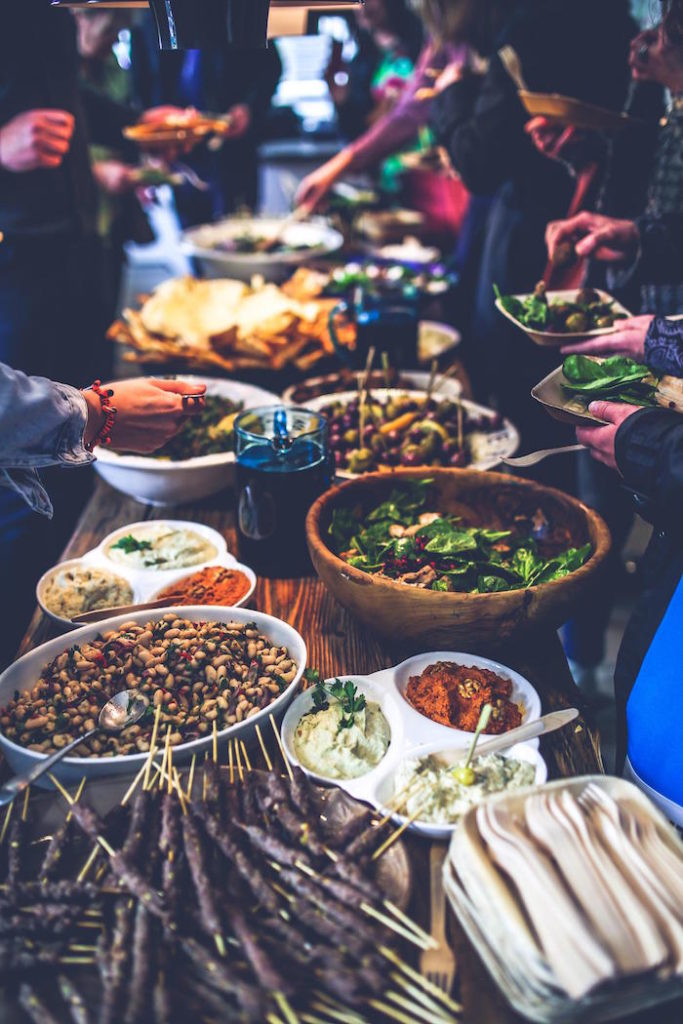
Whichever corner of the globe you visit; humans share their love for eating. For a lot of people, food is the best way to learn about a city and its culture, while for others the satisfaction comes from simply consuming delicious things. In many places, the best eateries are located in tiny alleys, hidden on upper floors, on food trucks, lost amid colorful market stands. Eating also makes us feel more local, as we embrace the local DNA by biting our way into it. The popularity of food tourism has given birth to so many food crawls, often organized by chefs, journalists, and cookbook authors. But how does the food tourism shape the world today?
Food vs. Culinary vs. Gastronomy Tourism

According to the World Food Travel Association, all three phrases function equivalently, but each of them may indicate a different perspective. Food tourism is often used as a shortened version of food and beverage tourism and implies that people are eating and drinking as well. Food tourism and food travel are often used interchangeably.
Culinary tourism has been in use since much earlier, and the ‘culinary’ part reminds of time someone spends in professional culinary training to become a chef. The phrase might include eating and drinking tours but also local recipe workshops. Gastronomy tourism is often used in Europe, mostly among romance languages speakers. In countries with rich gastronomic traditions like Italy and France, the phrase food travel sounds too basic. While for native English speakers the word might sound a bit elitist, it’s perfectly at home at tours which include gourmet menus and fine dining.
The Economy of Food Tourism

Estimating the economic impact of food tourism for a particular area is challenging because basically, we need to accurately estimate the number of tourists in an area, followed by interviewing a sample cohort to find out how much they’re spending on food and drink. On a deeper level, we could ask what portion of their budgets is for sustenance and what for unique culinary or beverage experience. Then there is a question whether a visitor’s spending on gourmet souvenir items in grocery stores or local street markets counts as food tourism.
The World Food Travel Association has come up with a fairly accurate model for estimating food tourism value. According to it, visitors spend about 25% of their travel budget on food and beverages, with the figure rising up to 35% inexpensive destinations, and falling to 15% in more affordable destinations.
A Food Traveler’s ID
According to research from 2016 Food Travel Monitor, 93% of today’s travelers can be considered food travelers. In this definition, a food traveler was considered anyone who has had food or beverage experience other than dining out in the past 12 months. This includes participation in food tours, going shopping in local grocery or gourmet stores, or visiting cooking schools.
Food travelers also visit beverage factories, take part in wine, beer, or spirits tasting, or simply visit a celebrated chocolatier, bakery, or gelateria for the sake of taking photos. However, more importantly, food travelers are explorers who love to get off the beaten paths and find new and unique experiences, like embarking on a street food tour in Saigon or losing themselves in the maze of alleys in the old center of Bari, hunting for the best focaccia, raw seafood, and orecchiette. However, a 2010 Psycho Culinary research shows that only 8.1% of food travelers expressed their gourmet experiences as the primary interest.
Benefits to Local Industry
Food tourism seems like a branch with a lot of potentials, but are there any benefits to the local industry? A sustainable food and drink tourism strategy would ensure more visitor arrivals, more sales, including rooms, airplane tickets, restaurant meals, car rentals, etc., as well as more media coverage for the region. Local vendors could get a new competitive advantage for selling unique food and drink. Governments, on the other hand, would benefit from more tax revenue, while communities would increase their awareness about tourism in general, as well as the local pride in the region’s food and drink resources.
The Role of Agriculture

Authors and professionals within the industry often use terms food tourism and agrotourism interchangeably, however, that is a mistake. As a subset of rural tourism, agrotourism includes farm experiences such as overnight stays harvest festivals and farm-style dinners. Other types of agrotourism include u-pick tours and other farm workshops where visitors can and take part and learn about food and beverage preparations, food sourcing, composting, and animal welfare. When compared to agrotourism, food tourism has a much greater economic impact, as it includes a wider variety of complementary businesses that appeal to a larger portion of travelers than farms and farmer’s markets.
With big cities facing a growing problem of over-tourism, travelers keen on unique experiences are more likely to look for off the beaten paths, flocking to areas that are less crowded and expensive. For those visitors, unique food and beverage experiences are inseparable from traveling itself. Local communities, on the other hand, can experience a positive impact by exploiting an increasing interest in regional food scenes and locally sourced produce.
- Top 6 Interesting Places to Dine at Around the World - July 4, 2019
- Your Guide to New Your City: Live It up Like a Local - April 10, 2019
- 5 Methods for Back Pain Relief - April 9, 2019






